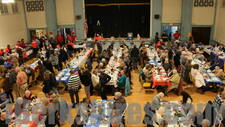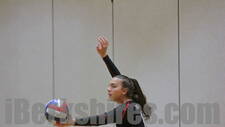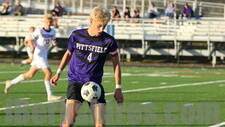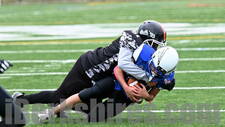State Ballet Of Georgia Exclusive Program To Open Jacob's Pillow 75th Season06:59PM / Monday, May 14, 2007
 | | Nina Ananiashvili |
Becket - On its U.S. debut tour, the State Ballet of Georgia launches the 75th Anniversary Season at Jacob's Pillow with a Pillow-exclusive program June 20-24.
Directed and headlined by classical ballet luminary Nina Ananiashvili, renowned for her appearances with the Bolshoi Ballet, American Ballet Theatre, and the Royal Ballet, the State Ballet of Georgia is based in the republic's capital city of Tbilisi and has by many accounts enjoyed an artistic resurgence during the three years of Ananiashvili's leadership.
Ananiashvili, a native of Tbilisi, continues to dance as a principal with American Ballet Theatre, and has won most of the major awards in ballet and performed with almost every prestigious ballet company in the world. The company performs a Pillow-exclusive program including Mozartiana, by Ananiashvili's compatriot George Balanchine, Second Before the Ground, from Pillow favorite Trey McIntyre, and the "Grand Divertissement" from Don Quixote, in which Ananiashvili performs with State Ballet of Georgia principal Sergei Filin, a former leading dancer with the Bolshoi Ballet.
The engagement is one of several events during opening week exploring Russian ballet, including the Ballet Program of The School at Jacob's Pillow which, for 2007, focuses on the various generations of the great Russian classical legacy, from Vaganova to Balanchine, the Bolshoi to the Kirov. In related free events, Anna-Marie Holmes, the first North American dancer to perform with the Kirov Ballet, discusses her award-winning efforts staging Russian ballets, coaching the great stars of the ballet world, and her directorship of the Ballet Program. Wednesday, June 20 at 5pm on Sommerspace at Blake's Barn. Also, on Saturday, June 23 at 6:30pm in the Doris Duke Studio Theatre, the students of the Ballet Program perform a world premiere at the Pillow's 75th Anniversary Diamond Gala on June 16, by Yuri Possokhov, himself a former Bolshoi principal and now choreographer-in-residence with the San Francisco Ballet.
Performance and Ticket Information for the State Ballet of Georgia at Jacob's Pillow: Evening performances are held Wednesday, June 20 through Saturday, June 23 at 8pm, with matinées on Saturday, June 23 and Sunday, June 24 at 2pm. Tickets are $58 each, with a 10% discount available for seniors, students, and youth age 13 and under. Box Office hours are Monday-Friday, noon-5pm, from now to June 17. From June 18 to August 26 the Box Office is open seven days a week from noon through curtain-up. Pillow Members receive a 10% discount on performances; to become a member call 413.243.9919 x27. Tickets may be purchased by calling the Box Office at 413.243.0745, faxing orders to 413.243.0749, or ordering online at www.jacobspillow.org. Jacob's Pillow is located on George Carter Road in Becket, MA, 10 minutes east on Route 20 from Mass Pike Exit 2. The Jacob's Pillow campus and theaters are wheelchair-accessible. Dinner reservations may be made for the Pillow Café at 413.243.0445.
Born in Tbilisi, Georgia, Nina Ananiashvili became a champion ice skater by the time she was ten. After entering the State Choreographic School of Georgia, she continued her training at the Bolshoi Choreographic School. In 1981, she joined the Bolshoi Ballet, where she still holds the exceptional rank of prima ballerina. To wide acclaim, Ananiashvili (pronounced a-nah-NYASH-vee-lee) has made frequent guest appearances with the Royal Ballet, the Kirov Ballet, and the New York City Ballet, among many, many others. Ananiashvili was made a principal dancer of American Ballet Theatre in 1993, a post she held even during her recent pregnancy and birth to a baby girl, Helene, during which period she took a hiatus from dancing-but not from directing her company. Critics have repeatedly praised her fluid grace and extraordinarily strong technique. Mentioning the section to be seen at the Pillow, Anna Kisselgoff wrote in a review of her performance as the lead ballerina in Don Quixote, "Ms. Ananiashvili, always at ease as Kitri, is at a new peak, and technically she has never been more brilliant. If medals were awarded for spinning faster than anyone else in fouetté turns, she would garner a bag of them for phenomenal speed. At the same time, there was perfect form in these turns…" Clive Barnes wrote in the New York Post of Ananiashvili, "She is the classical ballet's undeniable superstar."
The performances and classes comprising the Russian project this summer continue a strong Pillow tradition of highlighting classical Russian dance and dancers, with a connection going back almost to the earliest days of the festival. In 1941, Russian-born Irina Baronova (one of the Ballets Russes' famous "baby ballerinas") performed with American Ballet Theatre during the company's summer-long residency here. A year later, during the Ted Shawn Theatre's inaugural season, innovative ballet choreographer Bronislava Nijinska (sister of the legendary Diaghilev dancer Vaslav Nijinsky), was on The School's faculty and showed some of her latest work. When Nijinska returned to the Pillow in 1969 with the Buffalo Ballet, two of her ballets were danced by guest stars including Anna-Marie Holmes, now director of the The School's Ballet Program and recognized as the leading authority on 19th century Russian classical ballet. The faculty Holmes has assembled for 2007 spans the spectrum of Russian ballet, and includes Vladilen Semenov, a former dancer, ballet master, and artistic director for the Kirov Ballet, and Nanette Glushak, a former leading dancer with the New York City Ballet.
George Balanchine, the master of neoclassical ballet and longtime director of the New York City Ballet, was raised in St. Petersburg and entered the city's Imperial Theater School when he was nine. Born Giorgi Balanchivadze, the name change was suggested by Ballets Russes' leader Serge Diaghilev early in his career. Though Balanchine was never fluent in Georgian (a distinct language and orthography from Russian) and only visited the country twice when on tour with the New York City Ballet, he frequently laid strong claim to his Georgian ancestry. Balanchine's technique and repertory went on to define a uniquely American style of ballet, a modern way of moving that keeps the Russian classical tradition at its core. His Mozartiana, which is set to Tchaikovsky's adaptations of four Mozart works, opens with the "Preghiera" section ("prayer" in Italian, a reference to Mozart's original work, the motet "Ave Verum Corpus"), follows with the "Gigue," a section originated by Suzanne Farrell, continues with the "Menuet" (a section considered by Anna Kisselgoff in The New York Times to be "one of Mr. Balanchine's most perfect pieces of choreography"), and finishes with the "Theme and Variations," a conclusion appreciated by reviewers for its almost spiritual simplicity. George Balanchine made and remade Mozartiana several times in his long career: first in 1933, with revisions in 1935, and again in the mid-1940s. This final work premiered as part of the New York City Ballet's Tchaikovsky Festival in 1981, two years prior to the choreographer's death in 1983. The rehearsals and staging of Mozartiana for the State Ballet of Georgia were held in Tbilisi by Bart Cook and Maria Calegari, two former leading dancers with New York City Ballet. Four students, all twelve years old and from the School of American Ballet (the academy that feeds into the New York City Ballet), will dance the roles choreographed by Balanchine for the "Preghiera" section.
Made in 1996 for the Houston Ballet and set to music by the Kronos Quartet, Second Before the Ground is one of Trey McIntyre's early works, and continued the young choreographer's sharp trajectory to fame, begun in the early 1990s. A favorite choreographer during his two appearances (in 2005 and 2006) at Jacob's Pillow with his company, the Trey McIntyre Project, the 36-year-old trained at North Carolina School of the Arts and later in the academy at Houston Ballet, where his talent was cultivated by Ben Stevenson, the company's longtime artistic director. Soon after, The New York Times noted McIntyre as "obviously a new face to watch" based on his work Steel and Rain, commissioned for the New York City Ballet's prestigious Diamond Project. In 2001, Ismene Brown of the London Telegraph wrote in a review of Houston Ballet, "The best of the night, and a pleasure to watch, was the opening ballet by a Kansas choreographer, Trey McIntyre. In Second Before the Ground, he took a pretty score of African songs adapted for string quartet and drums, and made to it a flirting, loving, modern-classical ensemble for couples that was choreographically bright and unaffectedly sincere. Enchanting little gestural details between lovers never rang false-rubbed noses, heads patted, pretend tiffs."
The Grand Divertissement from Don Quixote is one of the most rousing and technically demanding pas de deux in the canon of classical ballet. French choreographer Marius Petipa was the originator of much of the 19th century ballet repertory now regarded as integral to the art form (Swan Lake, Sleeping Beauty, The Nutcracker), and his works integrated spectacular technique and production elements with graceful updates to the ballet lexicon, which was relatively inert prior to his efforts during the mid-1800s. In Don Quixote, the character of Kitri seeks to marry her lover, the poor barber Basilio, danced here by Sergei Filin, and succeeds with the help of Don Quixote. The section seen here closes the full ballet, and was part of Don Quixote's 1869 premiere at the Kirov Theatre, though it is now regarded as a staple of the Bolshoi Ballet's repertory-and of Nina Ananiashvili's personal repertory.
|



















